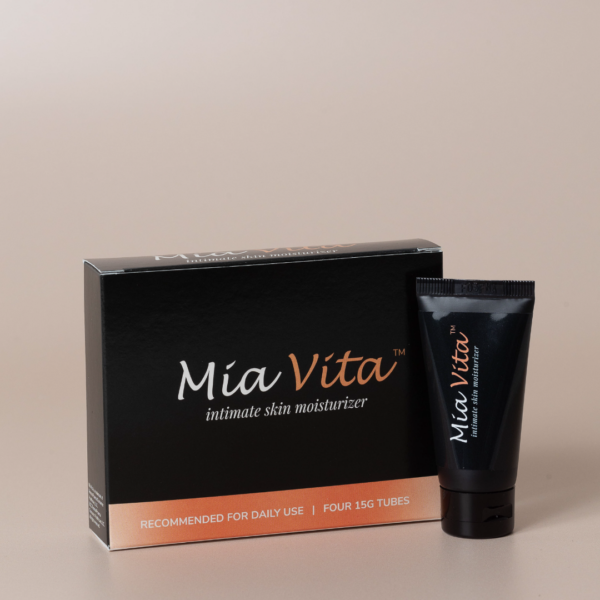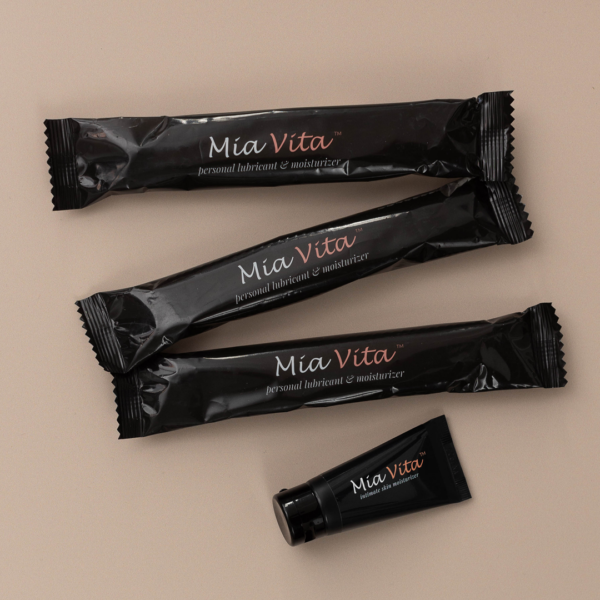
Your vaginal environment changes throughout your life. For women with Sjögren’s, vaginal and vulvar dryness can occur well before menopause.
This can leave women wondering: does Sjögren’s exacerbate menopause symptoms? Vaginal dryness, whether from Sjögren’s or menopause, can significantly impact your day-to-day life. The good news? You can find relief. Read on to learn what contributes to vaginal dryness in women with Sjögren’s, why vaginal dryness occurs during menopause, and how to alleviate symptoms.
Vulvar and vaginal dryness during menopause
Whether you undergo menopause earlier or later in life, naturally or via chemical menopause, you may experience vaginal or vulvar dryness—or both. Your vulva refers to the outermost skin of your reproductive system and sits at the opening of your vaginal canal. Some women feel more dryness around the vulva and others within the vagina. Around 50% of women experience vaginal dryness (also known as vaginal atrophy) during and up to three years post menopause.
Why does vaginal dryness occur? As your body stops preparing for reproduction and enters perimenopause, your estrogen levels fluctuate before steadily declining. Your vagina needs sufficient estrogen to maintain optimal function and lubrication. Without enough estrogen, your intimate skin loses its elasticity and becomes thinner and more prone to irritation and inflammation, which can lead to vaginal dryness.
Why does Sjögren’s cause vaginal and vulvar dryness?
Once diagnosed, women with Sjögren’s are up to three times more likely to experience vaginal dryness than those going through menopause alone.
Studies report that Sjögren’s, because it impacts moisture-producing glands, can hasten menopausal symptoms like vaginal dryness. On the other hand, in a study with pre-menopausal women diagnosed with Sjögren’s, researchers found no signs of vaginal dryness or atrophy. Instead, they theorized that vaginal dryness in women with Sjögren’s could also relate to poor blood flow, though more research needs to occur.
However, most experts agree there’s a connection between Sjögren’s and women’s sex hormones. As estrogen levels begin to decline during the latter period of perimenopause, a woman’s risk for Sjögren’s increases. Women at greater risk for Sjögren’s also experience fewer menstrual cycles or undergo early chemical menopause, both of which result in lower lifetime estrogen exposure.
How can you tell the difference between Sjögren’s and perimenopause?
Autoimmune diseases such as Sjögren’s are not one size fits all and can be challenging to diagnose due to their fluctuating nature and varied symptoms. Sjögren’s adds a complicating factor for women about to enter menopause. Most women receive a Sjögren’s diagnosis after age 40, which can make it difficult to differentiate between Sjögren’s and perimenopausal changes. Women may even overlook the impact of Sjögren’s on their intimate skin and presume any vaginal or vulvar dryness occurs due to fluctuating hormones.
Women with Sjögren’s may also wonder whether menopause exacerbates their symptoms. The answer? Once again, more research needs to occur. That said, some women with Sjögren’s do report worsening symptoms of vaginal dryness after menopause.
How to relieve vaginal dryness related to Sjögren’s and menopause
Vaginal dryness and irritation can impact your quality of life and your relationships. Due to the stigma surrounding women’s vaginal and reproductive health, only 25% of women seek and receive treatment for vaginal dryness.
You do not need to let vaginal dryness, whether from menopause, Sjögren’s, or both, continue to disrupt your wellbeing. Menopause and Sjögren’s may be part of your life, but uncomfortable symptoms like vaginal and vulvar dryness do not need to be. Effective relief is within reach, and you can choose which options feel and work best for you.
Avoid fragranced shower products and soaps
Most soaps, perfumes, and detergents include fragrance, which can irritate intimate skin and worsen symptoms of vaginal dryness. We recommend checking the products you use to see if they contain fragrance, and to try and swap them out for fragrance-free to see if that helps relieve your symptoms. You may also want to use a vaginal moisturizer for lasting, all-day relief from vaginal dryness.
Use an intimate moisturizer and personal lubricant
It’s a good idea to use a personal lubricant and vaginal moisturizer before sexual activity. Use of pH-balanced personal lubricants can make intercourse a more pleasurable experience for you and your partner and help prevent pain caused by vaginal dryness. Due to often inflamed and irritated vulvar tissue from Sjögren’s and menopause, sex can irritate sore areas and worsen vaginal dryness symptoms. Using a fragrance and hormone-free lubricant can help eliminate these risks.
Take pain medication
Talk to your doctor if you need additional pain relief. Your healthcare practitioner may recommend over-the-counter remedies. While pain medication does not treat vaginal dryness, it can reduce discomfort.
We must continue conversations about vaginal dryness and menopause and their relationship to Sjögren’s. The more we normalize talking about symptoms like vaginal dryness, the more women can learn about their bodies and get the help they need. And, in time, our conversations can raise awareness and lead to better solutions and remedies.
FemmePharma has been helping women navigate menopause for over two decades. No matter where you are in your journey, you deserve to have knowledgeable, intimate healthcare partners to help you feel your best. Explore our other articles, podcast episodes with women’s health experts, and products to ease your transition into menopause.


